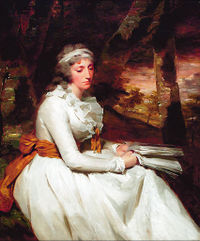Annotation:I'll Gang Nae Mair to Yon Town
Back to I'll Gang Nae Mair to Yon Town
I'LL GANG/GAR NAE MAIR TO/TAE YON TOON/TOUN/TOWN. AKA - "I'll Go No More to Your Town," "Bha mi 'n de air Cheilidh" (I went visiting yesterday). AKA and see "Lucky in Love," "Oh Gang with Me to Yon Town," "Pope's Toe (The)," "Welcome to the Town Again," "We'll gang nae mair to yon Town." Scottish, English; Reel. England, Northumberland. A Major (Kennedy, Raven): F Major (Athole, Bremner, Kerr, Skye, Surenne, Williamson): G Major (Jones, Oswald). Standard tuning (fiddle). AB (Surenne): AAB (Gow, Jones): AABB (Athole, Bremner, Gow, Kennedy, Raven, Williamson): AABB' (Kerr, Skye): AABBCCDDEEFF (Oswald). John Glen (1891) finds the earliest printing of this tune in Robert Bremner's 1757 collection (p. 6). The title appears in Henry Robson's list of popular Northumbrian song and dance tunes ("The Northern Minstrel's Budget"), which he published c. 1800. O'Neill (1922) remarks: "Popular since its first publication in Bremner's Collection of Scots Reels or Country Dances 1757, 'I'll gae nae mair to yon town' has been a fruitful source of variants which circulated under various titles. The variant herewith presented, was found without a name in Sergt. O'Neill's manuscripts."
Miss Lucy (Louisa) Johnston of Hilton was a charming and accomplished beauty at the close of the 18th century; a musician and frequenter of concerts and the dance assembly until she married one Richard Oswald of Auchencruive in 1793. Robert Burns wrote extra verses for the song "I'll gang nae mair to yon toon" (which he called "I'll Ay Ca' in by Yon Town" or "O, Wat ye Wha's in Yon Town") in honor of her arrival at her husband's family seat, near where he lived:

O' wat ye wha's is yon toun,
Ye see the e'ening sun upon?
The fairest maid's in yon toun,
That e'ening sun is shining on.
She died of tuberculosis four years later, after the birth of two daughters, despite Oswald's efforts to contain the disease by taking her to Portugal where the climate was thought healthful.
“We’ll Gang nae Mare tae Yon Toon” was the regimental march of several British army units at one time, including the 2nd Battalion The Queen’s Royal Regiment, the 1st Battalion The Essex Regiment and the 2nd Battalion The Royal Hampshire Regiment. The Scottish tune was introduced into English regimental repertoire by the first commanding officer of the 2nd Queens when it was raised in 1858. The Colonel, a man named Bruce, had transferred in from a Highland regiment and took the melody with him (according to David Murry, Music of the Scottish Regiments, Edinburgh, 1994, p. 205). These regiments have since been consolidated and amalgamated several times into other units, and have long ceased to exist. Murray writes, in expanation of the title:
Soldiers were not popular in Victorian England—except, sentimentally, when engaged in fighting far away—and the title of the march might well have found an echo in the hearts of the soldiers as they marched out of an unpopular station where, perhaps, the people were unfriendly, the girls unapproachable, and the publicans hostile.
See also the Irish variant "Lucky in Love," recorded in New York by County Leitrim flute play John McKenna in the 78RPM era.
Source for notated version: manuscripts in the possession of Chicago Police Sergeant James O'Neill, originally from County Down-many from the playing of his father [O'Neill].
Printed sources: Anderson (Anderson's Budget of Strathspeys, Reels & Country Dances for the German Flute or Violin), Edinburgh, 1820; p. 22. Anonymous (A Companion to the reticule), 1833; p. 9. Bremner (A Collection of Scots Reels), 1757; p. 6 (appears as "I'll gae nae mair to your Town"). Gow (Complete Repository, Part 1), 1799; p. 28. Johnson (Scots Musical Museum), 1797; No. 458. Jones [ed.] (Complete Tutor Violin), c. 1815; p. 20. Kennedy (Fiddler's Tune Book, vol. 2), 1954; p. 16. Kerr (Merry Melodies, vol. 2); No. 180, p. 21. MacDonald (The Skye Collection), 1887; p. 140. O'Neill (Waifs and Strays of Gaelic Melody), 1922; No. 256. Oswald (Caledonian Pocket Companion Book 10), 1760; p. 15. Raven (English Country Dance Tunes), 1984; p. 151. Stewart-Robertson (The Athole Collection), 1884; p. 205. Surenne (Dance Music of Scotland), 1852; p. 57. Williamson (English, Welsh, Scottish and Irish Fiddle Tunes), 1976; p. 58.
Recorded sources:
See also listing at:
Jane Keefer's Folk Music Index: An Index to Recorded Sources [1]
Alan Snyder's Cape Breton Fiddle Recordings Index [2]
